Many of us have an exercise program we follow. We lift weights, do aerobics and/or attend a yoga class, and they consume large chunks of time in our day, and require planning to complete. Here are five simple exercises which require almost no extra time to complete, plus you can achieve important long-term benefits to boot. However, don’t wait until you start having symptoms, and then start doing the exercises. Start when you’re 40-years old or as soon as you read this.
BTW, I did the artwork myself. Been thinking of a new career. If you’re interested in custom medical illustration, don’t hesitate to contact me.
I wish this could go without saying, but if you experience a lot of pain when you do these exercises, then don’t do them anymore and go see a doctor.
#1: MORNING BACK STRETCH
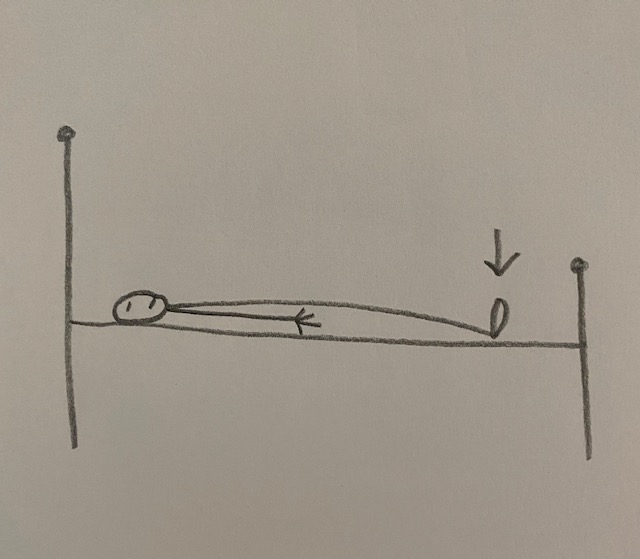
Even though I don’t have back problems, my back feels stiff when I get up in the morning. One of my patients told me about his daily morning stretch, and how it eliminated that ache. It sounded too simple to be effective, but I gave it a try, and I can feel the stiffness resolve within moments. Now I do it every morning.
While lying flat on your back, face up, gently press your heels into the mattress. You don’t have to actively arch your back. It will simply happen as you press those heels down. At first you might feel a tad of discomfort, but that quickly resolves as your back slightly extends. I do it a couple of times, and boomshakalaka! I’m almost ready to jump out of bed, except now I need to do exercise #2.
#2: MORNING FOOT STRETCH
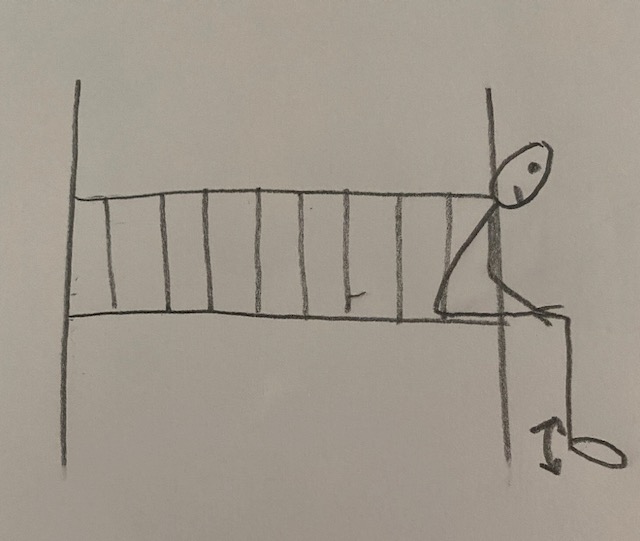
As we age, especially women, the first step we take in the morning can be a painful one. As these contracted structures acutely and forcibly stretch when we put our feet down, it can result in the onset of plantar fasciitis or Achilles tendonitis. This can cause tiny tears in the stiff tendons which results in chronic damage, especially if you do it every single morning.
Don’t wait until you sustain an injury. Start this exercise now.
After you’ve done exercise #1, swing your legs around and without applying all of your weight to them, set your feet on the ground. Then press them up and down, applying only part of your weight on your feet, kind of like kitties making biscuits. If the bottom of your foot feels okay, and there’s no pain, then gradually increase your weight, until you’re able to stand up without discomfort. This should only take a few seconds to do, but if you feel acute pain or even a stretchy discomfort, back off the weight you’ve applied and keep stretching. You can also do this stretch if you’ve been driving or sitting for a long time.
#3: SINGLE LEG STANDING (SLS)
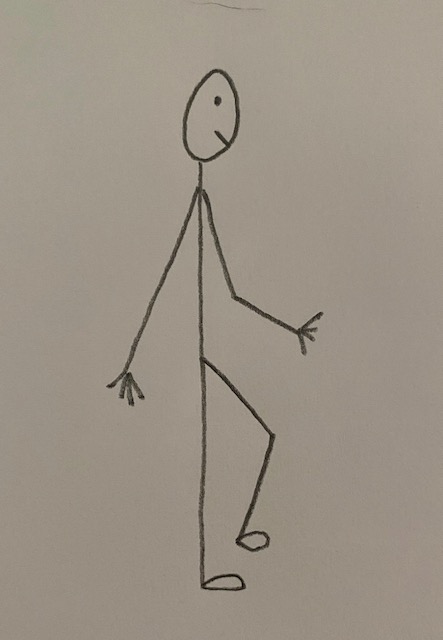
SLS is an exercise that’s been proven to prevent falls, thereby preventing fragility fractures in those of us of a certain older age.
Simply stand on one leg and get to the point where you can do this for 30 seconds, longer if you wish. Less, if it causes pain in a weight-bearing joint such as the knee. Start out someplace like your kitchen, using the countertop for support, until you are conditioned to stand on one leg. This may take a few months. Then, stand on one of your legs and intermittently remove your hand from the counter. As you develop your balance, eventually you’ll be able to remove your hand and stand on the one leg for longer and longer periods of time. Eventually, you’ll be able to stand on either leg—no hands—for 30 seconds. You should do this intermittently throughout the day when you’re cooking, brushing your teeth, or standing in an elevator. You don’t have to take time out to do SLS. I love multitasking!
#4: KNEE EXTENSION
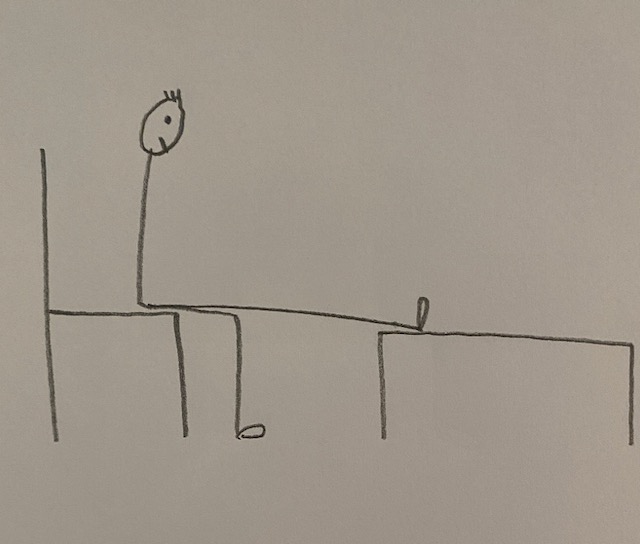
For those of us who are prone to develop arthritis of the knees or hips, they will begin to get stiff. It will happen insidiously. It’s kind of natural for the arthritic knee to begin to stay bent, as a way of limiting pain, or as compensation for a stiff hip or ankle. You may also develop the habit of resting with it in a bent position, or it may stay bent all night because it feels better that way. Then suddenly, it’s stuck, and you can no longer straighten it all the way. Now you have a contracture, and it’s often permanent. This in turn causes a bent-knee gait or a limp.
But you don’t have to end up like this, even if you have arthritis.
Every day, at any time, when you’re sitting down, straighten your leg out all the way. It’s hard to judge straightness by just standing with it straight, or sticking it out in front of you. Make the knee like a bridge. Put your heel on a coffee table, or a chair, and let that knee go completely straight. Then contract your quadriceps muscle, in order to hold it there. If you have developed arthritis, this could be a little uncomfortable. So, do it gently. You can even gently press on the thigh or knee, to help it get straight. If you did this just once a day, starting before you get that contracture, it could prevent it from happening completely. After you already have a contracture, you can try to straighten it, but more than likely, you’ll need the help of a physical therapist, and it may never resolve itself.
#5: SITTING ACHILLES TENDON STRETCH
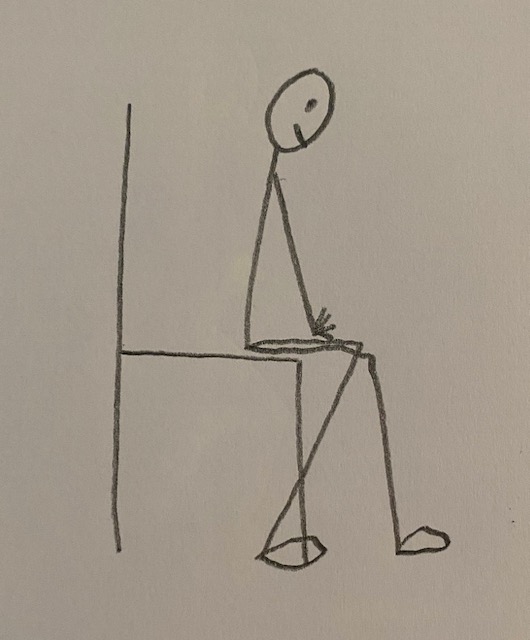
With deconditioning or diminished exercise, our Achilles tendon may begin to shorten. This is particularly prevalent in women. We’re shorter and more likely to sit with our foot pointed down and our Achilles tendon shortened. We’re also more likely to sit with our feet tucked up under us, which can also result in a shortened Achilles tendon. Wearing high heels can have the same effect. This can become chronic and in turn, lead to painful mechanical problems with our feet and ankles. So, at some point every day, starting when you read this, spend some time during the day with your feet flat on the ground, and even better, with your ankle resting behind the line of your knee, so that there is some stretching of your Achilles tendon.
Start all five of these simple exercises sooner, rather than later, so you’re not working to correct problems but to prevent them.
These five, easy daily exercises with big long-term payoffs for women over 50 aren’t the only exercises I recommend, but they’re the only ones you can incorporate into the routine part of your day, plus they give the benefits of other exercises which do require time and expertise to accomplish.








19 thoughts on “5 EASY DAILY EXERCISES WITH BIG LONG-TERM PAYOFFS FOR WOMEN OVER 50”
Thank you! I am adding these to my wake up routine!
Great! You can rest assured they will help you!
Thank you for these very easy, important and practical exercises!
I hope you will be able to incorporate them into your daily routine!
You are funny Dr Bergin and I appreciate the easy exercises.
I love these great, and easy to incorporate, reminders, thank you! And, I think you have a brilliant career ahead of you in Medical Illustration! XO
Great post! going to incorporate these into my daily routine. Thank you! Love the illustrations, simple and to the point.
Thank you these are very doable and I have started today to add them into my routine.
This morning I began with exercise #1 while still in bed, but it’s going to take Annie a while before she realizes I’m not jumping out of bed. Then I did the flamingo, standing on one leg while I was making my smoothie and was pleasantly surprised. Doing okay with these! xoxox, Brenda
These are quick and easy ways to stay more flexible. Thanks for these. As for the medical illustration… don’t quit your day job Dr. B
These exercises are completely doable for anyone like myself who is aerobic sweating adverse and putting my legs behind my head for a good stretch. Thank you! I also like the illustrations. Makes me feel like I know an artistic kindred soul.
Love the artwork – looks similar to mine! Appreciate the exercises, too.
Loved this! Easy to remember in the morning. Thank you!
Love this info! Starting now before my upcoming 69th bday!
I DO NUMBER ONE DAILY!JUST FEELS GOOD!
I CAN NOT BELIEVE WE HAVE GOTTEN TO THIS STAGE!
WHERE DID THE TIME GO AND THE FLEXIBILITY?
I SHALL BALANCE WHILE STIRRING THE PASTA!I SHALL LET YOU KNOW HOW THAT TURNS OUT!
NEW POT BELLY PIG IN MY HOME!
CATCH THE LATEST OVER THERE……………XOXO
Good exercises. I would like some tips for getting up off the floor. Hitting 75 now and it is not easy to get up. Also low chairs are getting harder and harder to get up from. What is going on here(?)!
Many of my patients used to call me “Dr. No.” It’s so much easier to tell patients what NOT to do, over what TO DO! At 75, you should stop getting on the floor. When you get up, you have to do a squat, which puts 10-20 times your body weight into your knees. Just stop. If you fall, and you can’t hoist yourself up, by dragging your body up to a piece of furniture, and pushing with all your might, then you’ll need to call 911. Don’t sit in low chairs, or chairs without arms to push on. You’re simply getting weaker. It’s natural. If you’re strong enough to do a guided exercise program, then do it. I’m 69, and still lifting weights, walking 3 miles a day, riding my horse and lugging my guitar around town to play at seedy bars for tips. But you’ll never catch me on the floor…intentionally. Set up your environment to minimize the potential to fall.
thank you for your advice. Much appreciated.
Thank you for the very useful and doable exercises. I live with chronic pain (osteoarthritis in back, both hips and sacroiliac. Very painful.Thank you for sharing and I love your beautiful blog, Brenda. Always a joy and very informative on a variety of subjects. A ray of sunshine on a cloudy day!xox
Comments are closed.